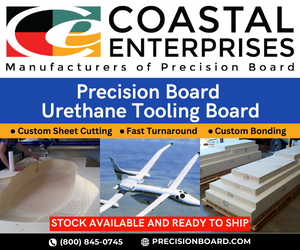European Space Agency authorizes new Ariane 6, Vega C launch vehicles development
The European Space Agency (ESA) has signed contracts for the development of the Ariane 6 new-generation launcher, its launch base, and the Vega C evolution of the agency’s current small launcher.
The European Space Agency (ESA) has signed contracts for the development of the Ariane 6 new-generation launcher, its launch base, and the Vega C evolution of the agency’s current small launcher.
The contracts were signed at ESA’s Paris head office with, respectively, Airbus Safran Launchers (ASL, Issy-Les-Moulineaux, France), France’s CNES space agency (Centre National d’Etudes Spatiales, Paris) and the Vega C’s prime contractor, ELV SpA (European Launch Vehicle, Colleferro, Italy), a 70/30 joint venture of Colleferro-based Avio and the Italian Space Agency (ASI - Agenzia Spaziale Italiana, Rome) that is Vega’s current prime contractor. Those agreements cover all development work on the Ariane 6 and its launch base for a maiden flight in 2020, and the same on the Vega C for its 2018 debut.
“These contracts will allow the development of a family of European launchers, highly competitive in the world market and ensuring autonomous access to space at fully competitive prices for ESA’s Member States,” says Jan Woerner, director general of ESA. “They are an important change of governance in the European launcher sector, with industry being the design authority and taking full responsibility in the development and exploitation of the launchers, and committing to deliver them to ESA and the European institutional actors at specified competitive prices.”
ESA is overseeing procurement and the architecture of the overall launch systems, while industry is developing the rockets, with ASL as prime contractor and design authority for Ariane 6, and ELV serving in those capacities for Vega C.
ASL and ELV are working closely together on the P120C solid-propellant motor that will form Vega C’s first stage and Ariane’s strap-on boosters. Ariane’s modular approach will offer either two boosters (Ariane 62) or four boosters (Ariane 64), depending on the required performance. The boosters feature the largest filament wound composite motor cases ever produced in Europe. Additionally, RUAG (Zurich/Emmen, Switzerland) will fabricate the Ariane 6 fairings from aluminum honeycomb-cored sandwich panels with carbon fiber-reinforced facesheets.
The site of the launch base for Ariane 6 at Europe’s Spaceport in Kourou, French Guiana, has been chosen, and prime contractor CNES is already excavating the site. The three contracts follow the decision taken at the ESA Council meeting at Ministerial level held in Luxemburg in December 2014 to maintain Europe’s leadership in the fast-changing commercial launch service market. “With the signing of these contracts we are on track on building a new family of launchers featuring common building blocks, in line with the decisions and schedule set at the Ministerial Meeting in 2014,” says Gaele Winters, ESA’s director of launchers.
The contracts were signed by Gaele Winters, ESA’s director of Launchers; Jean-Yves Le Gall, president of CNES; Alain Charmeau, CEO/president of ASL; and Pierluigi Pirrelli, CEO of ELV.
The contract amounts are €2.4 billion (US$2.77 billion) for Ariane 6 (ASL), €600 million (US$691.7 million) for the launch base (CNES) and €395 million US$455.4 million) for Vega C (ELV).
Related Content
-
Welding is not bonding
Discussion of the issues in our understanding of thermoplastic composite welded structures and certification of the latest materials and welding technologies for future airframes.
-
ASCEND program update: Designing next-gen, high-rate auto and aerospace composites
GKN Aerospace, McLaren Automotive and U.K.-based partners share goals and progress aiming at high-rate, Industry 4.0-enabled, sustainable materials and processes.
-
Plant tour: Albany Engineered Composites, Rochester, N.H., U.S.
Efficient, high-quality, well-controlled composites manufacturing at volume is the mantra for this 3D weaving specialist.















.jpg;maxWidth=300;quality=90)
